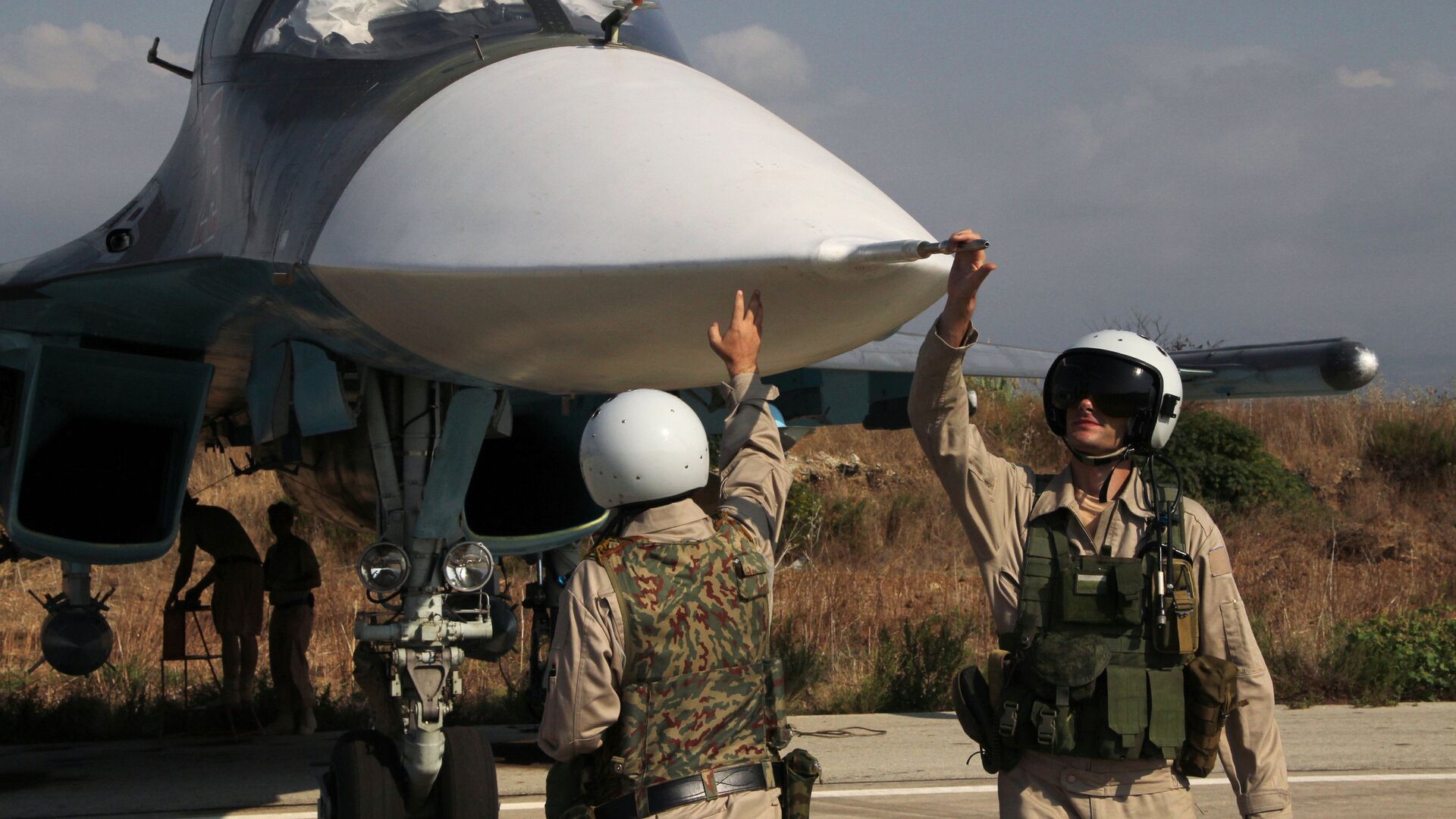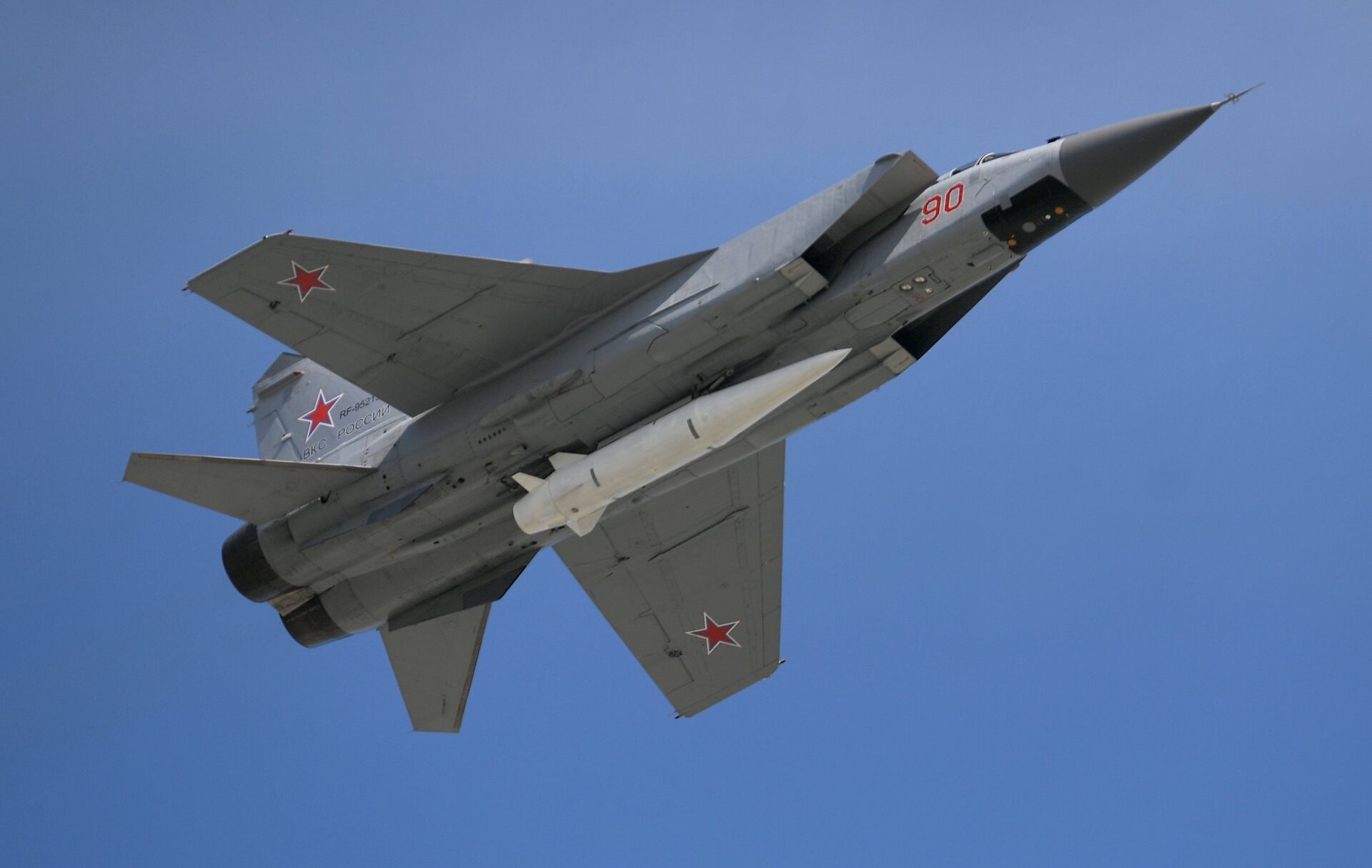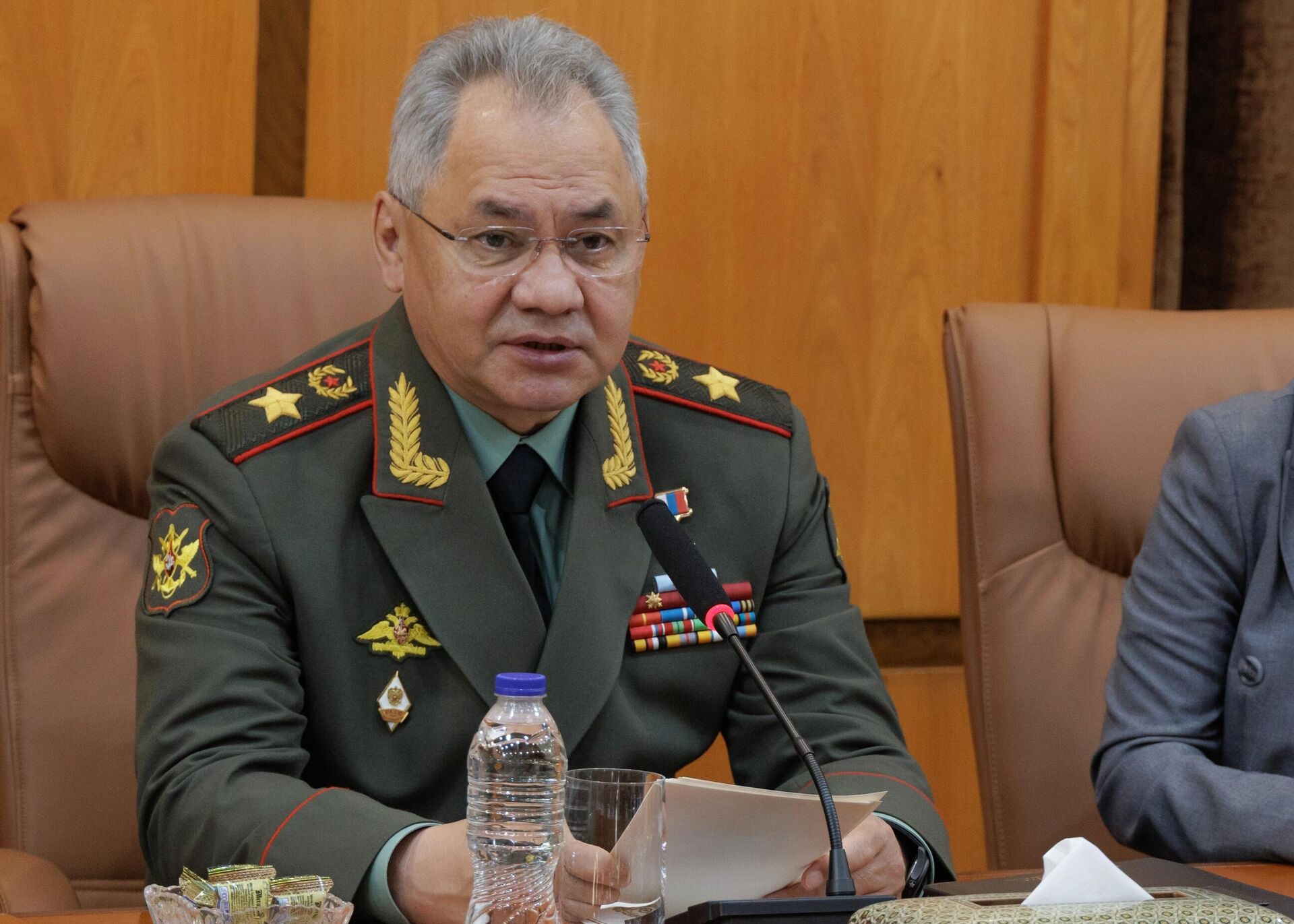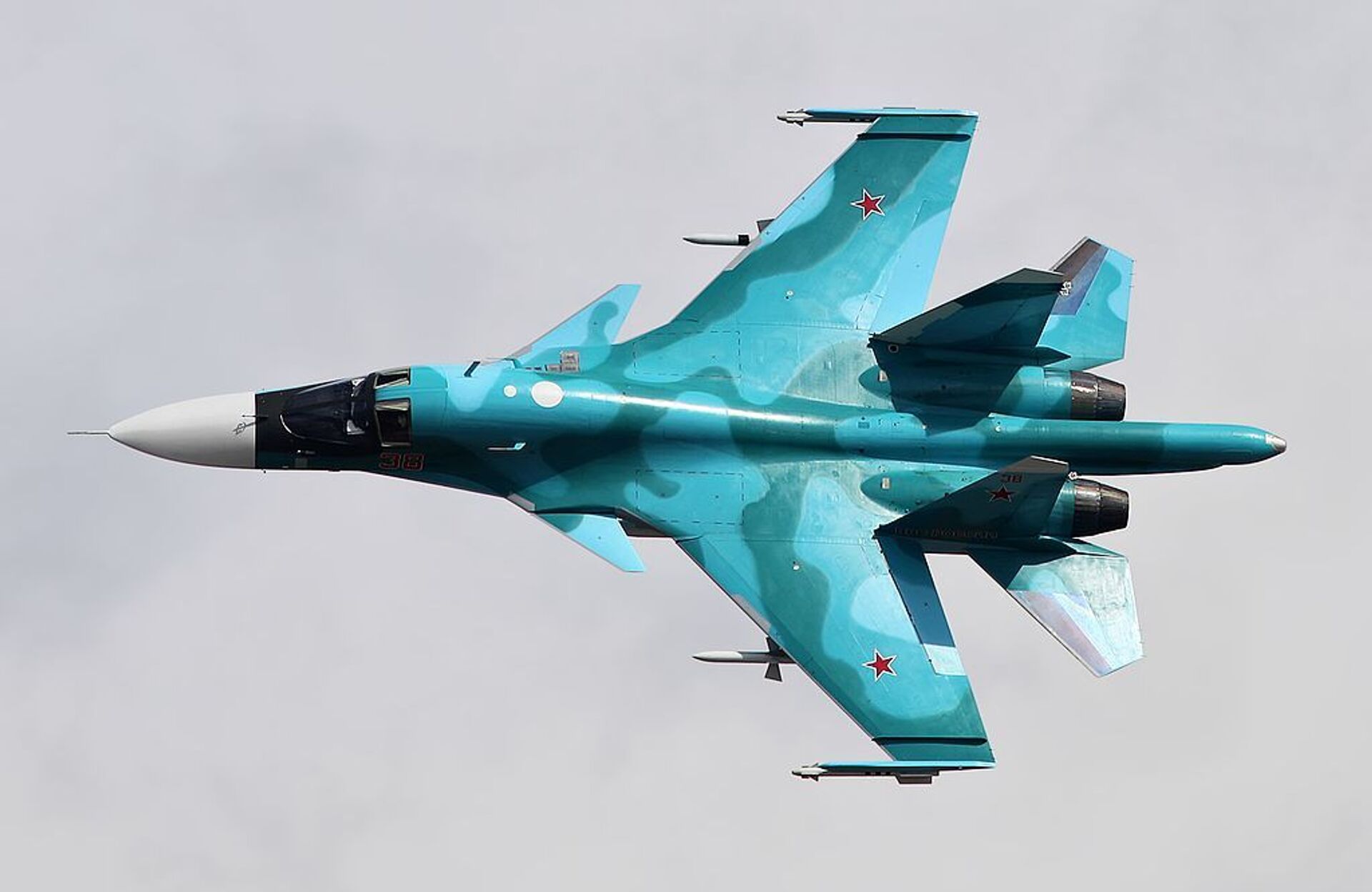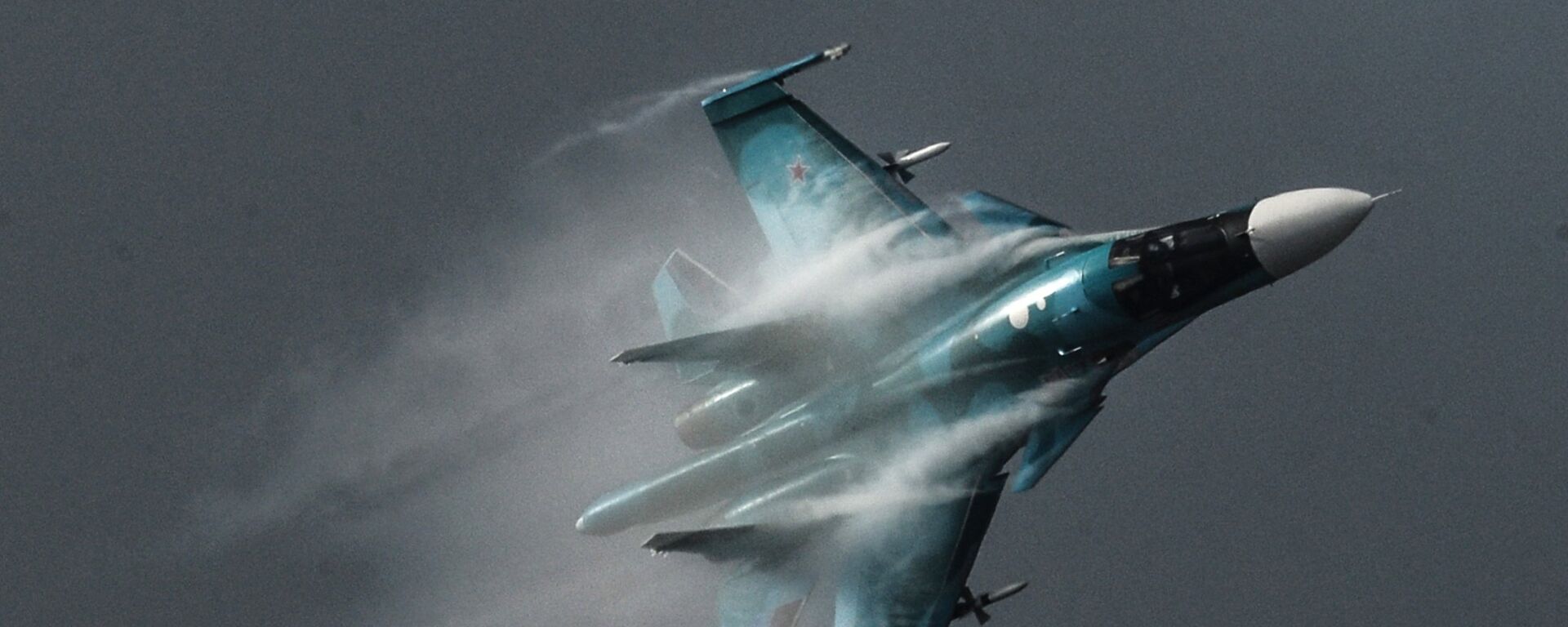https://sputniknews.in/20231006/su-34---more-orders-for-the-duckling-that-is-bombing-ukrainian-forces-into-submission-4648406.html
Su-34: More Orders For The Duckling Bombing Ukrainian Forces Into Submission
Su-34: More Orders For The Duckling Bombing Ukrainian Forces Into Submission
Sputnik India
Russia's Su-34 tactical bomber, fondly referred to as the Duckling by Russian aviators because of its flat-shaped nose cone, has emerged as a formidable weapon system during the course of the Special Military Operation (SMO).
2023-10-06T21:07+0530
2023-10-06T21:07+0530
2023-10-10T13:24+0530
sergei shoigu
antony blinken
ukraine
us
russia
nato
mod russia
ka-52 helicopter
sputnik opinion
https://cdn1.img.sputniknews.in/img/07e7/07/19/3185878_0:160:3073:1888_1920x0_80_0_0_9fa44572ed1d370ef8fbaa79afe66a2f.jpg
Russia's Su-34 tactical bomber, fondly referred to as the Duckling by Russian aviators because of its flat-shaped nose cone, has emerged as a formidable weapon system during the course of the Special Military Operation (SMO). Its success in interdicting the movement of fuel, ammunition and troops close to the battlefront has brought Ukrainian forces to their knees.Understandably, the Russian Aerospace Force (RuAF) wants more Ducklings at its bases and Russian Ministry of Defense (RuMoD) Chief, General of the Army Sergei Shoigu, has been forthcoming. According to the RuMoD, the General has asked the leadership of the Novosibirsk Aviation Plant to step up production of the Su-34.The Novosibirsk Aviation Plant, named after Chkalov, carries out serial production, repair and modernization of the twin (side-by-side) seat bomber based on the Su-27 (Flanker) design.During a recent visit to the plant, General Shoigu inspected the flight test station and the final assembly shop of the enterprise, which is part of PJSC United Aircraft Corporation.Briefing the Minister, the Plant director, Alexander Panasenko, said that currently the enterprise is capable of not only producing serial products, but also carrying out major repairs of aircraft.General Shoigu tasked the management of the enterprise to increase the pace of production and repair of equipment, taking into account the demand for manufactured products.About the Su-34The Su-34 was conceived as a partial replacement for the Su-24 tactical bomber and the Tupolev Tu-22M long-range strategic and maritime strike bomber.As a Su-24 replacement, it was developed as a multifunctional fighter-bomber that could intercept enemy fighters, deliver air strikes against enemy ground targets in operational and tactical depth in highly contested airspace.The Su-34 is optimised for low level penetration to avoid radar detection. It is capable of flying in the autopilot mode at extremely low altitudes, skirting the terrain.Russian exercises with the aircraft involve manoeuvring at 100m and attack from heights as low as 25m. In addition to low level penetration, the Su-34 is optimised for long endurance and range.It can be promptly redeployed for missions from any parts of the country to its border to reliably seal off a possible armed conflict before the arrival of the main forces.Sukhoi demonstrated the Su-34's long endurance before the plane entered service; a crew of test pilots from the Sukhoi design bureau performed a non-stop flight from Moscow to Sakhalin in the Russian Far East and back with aerial refuelling.Sukhoi designers laid great emphasis on crew comfort while designing the Su-34, in order to support its long endurance.Despite side by side seating, there is space between the pilot seats to spread a mattress, allowing one of the crew members to rest during a flight. Space behind the pilots’ seats allows them to stand up to their full height.There is a microwave oven, an air conditioner, an electro-massage system built into the pilots’ seats and even a bio toilet aboard the bomber!Operational Role Before SMO Before the start of the SMO, the Su-34 was armed and used for battlefront interdiction of troops and supplies. In Syria, where airspace was largely uncontested, it was mostly used to drop unguided bombs and short range precision guided air-to-surface missiles.Laboured Success The success of the Su-34 in the initial stages of the SMO was laboured and marred by losses due to the influx of capable Western MANPADs, short and medium range air defence (AD) systems. Unfavourable terrain - vast stretches of open steppes - allowed AD missiles to be trained on targets at long distances, despite low altitude penetration, aggravating the danger.Consequently, RuAF relied more and more on precision attacks using air to surface missiles such as the Kh-31P anti radiation missile, Kh-59 long range Optical/Radar guided air to surface missile, Kh-36 long range cruise missile and Kh-38 short range air to surface missile with universal seeker.Around March 2023, Russia operationally deployed its FAB-500M62 bombs equipped with UMPC (Universal Module for Planning & Correction). UMPC is conceptually similar to the US JDAM (Joint Direct Attack Munition) that converts unguided bombs, or "dumb bombs", into all-weather precision-guided munitions. The kits are strapped onto unguided bombs such as the FAB-250 and FAB-500. Following release from the aircraft, the modules deploy wings and other aerodynamic control surfaces to facilitate gliding and piloting. Using a SATNAV (satellite navigation) module the autopilot glides precisely to the loaded target coordinates.The UMPC allowed a Su-34 to fly patrols at high levels, to minimise fuel consumption and maximise endurance, and launch precision attacks on Ukrainian targets from as far away as 70 km, well outside the range of Ukrainian air defences. It took a few months for the performance of UMPC kits to stabilise to an extent where serial production could start. Once that happened, the Su-34, with its ability to lift heavy loads, became a very potent weapon system.UMPC kitted bombs are in flight for so little time that it is impossible to engage them using AD systems.Very soon after the Ukrainian counter offensive started on June 4, the Su-34 were wreaking havoc on Ukrainian forces with FAB-500M62 UMPC. As of now, Su-34s are also attacking Ukrainian forces with monster FAB-1500M54 UMPC bombs that cause catastrophic destruction.Since their introduction, Russian forces have improved the accuracy of UMPC kits and implemented other enhancements such as the ability to set target coordinates from the cockpit before release, increasing the versatility of the bombs.Besides the grit of Russian soldiers and efficacy of traditional Russian weapons, some new weapon systems that have played a key role in thwarting the Ukrainian counteroffensive include the Su-34 with UMPC kitted bombs, Ka-52 with Vikhr ATGMS, Lancet kamikaze drones and FPVs.Strategic Role Having succeeded in developing the Su-34 as a worthy replacement to the Su-24, Sukhoi is now additionally developing the Su-34 as a worthy replacement for the Tu-22M3 strategic bomber.Recently, a source told RIA Novosti that the tactical bomber has been upgraded to launch a long range cruise missile capable of carrying conventional or nuclear warhead.The upgrade was implemented on the Su-34 NVO (New Capabilities) variant of the fighter bomber, which first entered service with the air regiment in the Chelyabinsk region in March 2021.“The missile is not new, like the aircraft, but they have not been used in one complex before, and the new solution increases the variability of the use of both the missile and the aircraft,” RIA Novosti's interlocutor explained.Su-34 NVO Upgrade The Su-34 NVOupgrade includes improved electronic warfare (EW) systems. Its flight and weapon management system has been upgraded to launch high-precision weapons and carry optronic and radar reconnaissance and targeting pods on external pylons. The internal reconnaissance and targeting capability of the base variant is limited.Long Range Cruise Missile The newly integrated long range cruise missile was not named by the RIA Novosti source, but it is likely to be the Kh-101, a stealth missile that can carry a conventional or nuclear warhead. The nuclear armed variant of the missile is named Kh-102.The missile is reported to have an operational range of 4,500km (2,800 miles), and features a guidance package that includes an inertial navigation system (INS), a terrain contour matching (TERCOM) system, a digital scene-matching area correlation (DSMAC) system, and a GPS/GLONASS receiver.Compared with the older, conventionally-armed Kh-555 ALCM that it replaces, the Kh-101 features significantly improved accuracy and a larger payload, making it suitable for use against hardened targets.According to the open sources, the Kh-101 has a combat weight of 2,400 kg (including a warhead of 400 kg), a length of 745 cm, and a speed of Mach 0.6-0.78. The missile can be equipped with a high-explosive (HE), penetrating, or cluster warhead.Kh-101 is currently integrated with the Tu-160 and Tu-95MSM strategic bombers of Russia`s Aerospace Forces (RuAF).Kinzhal Integration In September, TASS reported that the Su-34 had for the first time launched a Kinzhal hypersonic missile.Earlier, only the MiG-31K fighter and the Tu-22M3M supersonic bomber had the capability to launch the Kinzhal.Conclusion Plans are afoot to make the Su-34 even more potent, both in tactical and strategic roles.For example, a short range hypersonic missile, powered by Product 71 ramjet engine, is being developed for the Su-34 frontline bomber and the Tu-22M3 supersonic strategic bomber under the Ostrota program.Upgrading the Su-34 to a strategic role would add to Russia's deterrence against a US/NATO intervention in the conflict. The Su-34 operates from more bases than Russian strategic bombers, making it less vulnerable to enemy counter air operations . Also, the Su-34 is optimised for long duration low level flight, making radar detection difficult.In case of a conflict with NATO, the SU-34 would be able to carry two Kh-101 missiles, cruise undetected to its launch points and launch the missiles from an unexpected direction. The ability of the Su-34 to launch the Kinzhal adds credibility to its deterrence potential.
https://sputniknews.in/20230929/russias-su-34-fighter-bomber-gives-ukraine-nightmares-ahead-of-winter-4505821.html
ukraine
us
russia
Sputnik India
feedback.hindi@sputniknews.com
+74956456601
MIA „Rossiya Segodnya“
2023
News
en_IN
Sputnik India
feedback.hindi@sputniknews.com
+74956456601
MIA „Rossiya Segodnya“
Sputnik India
feedback.hindi@sputniknews.com
+74956456601
MIA „Rossiya Segodnya“
su-34 - more orders for the duckling that is bombing ukrainian forces into submission, su-34 fullback fighter bomber, su-34 frontline jet, su-34 fullback fighter bomber ukraine, su-34 fullback fighter bomber ukraine operation, su-34 fullback fighter bomber ukraine russia special military operation, su-34 fighter bomber ukraine conflict, su 34 ukraine conflict, su 34 russia special military operation, su 34 ukraine special military operations, ukraine war news, ukraine frontlines, ukraine russia war, ukraine russia war latest, ukraine news,
su-34 - more orders for the duckling that is bombing ukrainian forces into submission, su-34 fullback fighter bomber, su-34 frontline jet, su-34 fullback fighter bomber ukraine, su-34 fullback fighter bomber ukraine operation, su-34 fullback fighter bomber ukraine russia special military operation, su-34 fighter bomber ukraine conflict, su 34 ukraine conflict, su 34 russia special military operation, su 34 ukraine special military operations, ukraine war news, ukraine frontlines, ukraine russia war, ukraine russia war latest, ukraine news,
Russia's Su-34 tactical bomber, fondly referred to as the Duckling by Russian aviators because of its flat-shaped nose cone, has emerged as a formidable weapon system during the course of the Special Military Operation (SMO). Its success in interdicting the movement of fuel, ammunition and troops close to the battlefront has brought Ukrainian forces to their knees.
Understandably, the Russian Aerospace Force (RuAF) wants more Ducklings at its bases and Russian Ministry of Defense (RuMoD) Chief, General of the Army Sergei Shoigu, has been forthcoming. According to the RuMoD, the General has asked the leadership of the Novosibirsk Aviation Plant to step up production of the Su-34.
The Novosibirsk Aviation Plant, named after Chkalov, carries out serial production, repair and modernization of the twin (side-by-side) seat bomber based on the Su-27 (Flanker) design.
During a recent visit to the plant, General Shoigu inspected the flight test station and the final assembly shop of the enterprise, which is part of PJSC United Aircraft Corporation.
Briefing the Minister, the Plant director, Alexander Panasenko, said that currently the enterprise is capable of not only producing serial products, but also
carrying out major repairs of aircraft.
General Shoigu tasked the management of the enterprise to increase the pace of production and repair of equipment, taking into account the demand for manufactured products.
The Su-34 was conceived as a partial replacement for the Su-24 tactical bomber and the Tupolev Tu-22M long-range strategic and maritime strike bomber.
As a Su-24 replacement, it was developed as a multifunctional fighter-bomber that could intercept enemy fighters, deliver air strikes against enemy ground targets in operational and tactical depth in highly contested airspace.
The
Su-34 is optimised for low level penetration to avoid radar detection. It is capable of flying in the autopilot mode at extremely low altitudes, skirting the terrain.
Russian exercises with the aircraft involve manoeuvring at 100m and attack from heights as low as 25m. In addition to low level penetration, the Su-34 is optimised for long endurance and range.
It can be promptly redeployed for missions from any parts of the country to its border to reliably seal off a possible armed conflict before the arrival of the main forces.
Sukhoi demonstrated the Su-34's long endurance before the plane entered service; a crew of test pilots from the Sukhoi design bureau performed a non-stop flight from Moscow to Sakhalin in the Russian Far East and back with aerial refuelling.
Sukhoi designers laid great emphasis on crew comfort while designing the Su-34, in order to support its long endurance.
Despite side by side seating, there is space between the pilot seats to spread a mattress, allowing one of the crew members to rest during a flight. Space behind the pilots’ seats allows them to stand up to their full height.
There is a microwave oven, an air conditioner, an electro-massage system built into the pilots’ seats and even a bio toilet aboard the bomber!
Operational Role Before SMO
Before the start of the SMO, the Su-34 was armed and used for battlefront interdiction of troops and supplies. In Syria, where airspace was largely uncontested, it was mostly used to drop unguided bombs and short range precision guided air-to-surface missiles.
The success of the Su-34 in the initial stages of the SMO was laboured and marred by losses due to the influx of capable Western MANPADs, short and medium range air defence (AD) systems. Unfavourable terrain - vast stretches of open steppes - allowed AD missiles to be trained on targets at long distances, despite low altitude penetration, aggravating the danger.
Consequently, RuAF relied more and more on precision attacks using air to surface missiles such as the Kh-31P anti radiation missile, Kh-59 long range Optical/Radar guided air to surface missile, Kh-36 long range cruise missile and Kh-38 short range air to surface missile with universal seeker.
Around March 2023, Russia operationally deployed its FAB-500M62 bombs equipped with UMPC (Universal Module for Planning & Correction). UMPC is conceptually similar to the US JDAM (Joint Direct Attack Munition) that converts unguided bombs, or "dumb bombs", into all-weather precision-guided munitions. The kits are strapped onto unguided bombs such as the FAB-250 and FAB-500. Following release from the aircraft, the modules deploy wings and other aerodynamic control surfaces to facilitate gliding and piloting. Using a SATNAV (satellite navigation) module the autopilot glides precisely to the loaded target coordinates.
The UMPC allowed a Su-34 to fly patrols at high levels, to minimise fuel consumption and maximise endurance, and launch precision attacks on Ukrainian targets from as far away as 70 km, well outside the range of Ukrainian air defences. It took a few months for the performance of UMPC kits to stabilise to an extent where serial production could start. Once that happened, the Su-34, with its ability to lift heavy loads, became a very potent weapon system.
UMPC kitted bombs are in flight for so little time that it is impossible to engage them using AD systems.
Very soon after the Ukrainian counter offensive started on June 4, the Su-34 were wreaking havoc on Ukrainian forces with FAB-500M62 UMPC. As of now, Su-34s are also attacking Ukrainian forces with monster FAB-1500M54 UMPC bombs that cause catastrophic destruction.
Since their introduction, Russian forces have improved the accuracy of UMPC kits and implemented other enhancements such as the ability to set target coordinates from the cockpit before release, increasing the versatility of the bombs.
Besides the grit of Russian soldiers and efficacy of traditional Russian weapons, some new weapon systems that have played a key role in thwarting the Ukrainian counteroffensive include the Su-34 with UMPC kitted bombs, Ka-52 with Vikhr ATGMS, Lancet kamikaze drones and FPVs.
Having succeeded in developing the Su-34 as a worthy replacement to the Su-24, Sukhoi is now additionally developing the Su-34 as a worthy replacement for the Tu-22M3 strategic bomber.
Recently, a source told RIA Novosti that the tactical bomber has been upgraded to launch a long range cruise missile capable of carrying conventional or nuclear warhead.
The upgrade was implemented on the Su-34 NVO (New Capabilities) variant of the fighter bomber, which first entered service with the air regiment in the Chelyabinsk region in March 2021.
“The missile is not new, like the aircraft, but they have not been used in one complex before, and the new solution increases the variability of the use of both the missile and the aircraft,” RIA Novosti's interlocutor explained.
Su-34 NVO Upgrade The Su-34 NVO
upgrade includes improved electronic warfare (EW) systems. Its flight and weapon management system has been upgraded to launch high-precision weapons and carry optronic and radar reconnaissance and targeting pods on external pylons. The internal reconnaissance and targeting capability of the base variant is limited.
Long Range Cruise Missile
The newly integrated long range cruise missile was not named by the RIA Novosti source, but it is likely to be the Kh-101, a stealth missile that can carry a conventional or nuclear warhead. The nuclear armed variant of the missile is named Kh-102.
The missile is reported to have an operational range of 4,500km (2,800 miles), and features a guidance package that includes an inertial navigation system (INS), a terrain contour matching (TERCOM) system, a digital scene-matching area correlation (DSMAC) system, and a GPS/GLONASS receiver.
Compared with the older, conventionally-armed Kh-555 ALCM that it replaces, the Kh-101 features significantly improved accuracy and a larger payload, making it suitable for use against hardened targets.
According to the open sources, the Kh-101 has a combat weight of 2,400 kg (including a warhead of 400 kg), a length of 745 cm, and a speed of Mach 0.6-0.78. The missile can be equipped with a high-explosive (HE), penetrating, or cluster warhead.
Kh-101 is currently integrated with the Tu-160 and Tu-95MSM strategic bombers of Russia`s Aerospace Forces (RuAF).
In September, TASS reported that the Su-34 had for the first time launched a Kinzhal hypersonic missile.
“The Su-34 aircraft used the Kinzhal hypersonic missile during the air strike. The first crew that successfully completed such a task was nominated for state awards,” the agency’s interlocutor said.
Earlier, only the MiG-31K fighter and the Tu-22M3M supersonic bomber had the capability to launch the Kinzhal.
Plans are afoot to make the Su-34 even more potent, both in tactical and strategic roles.
For example, a short range hypersonic missile, powered by Product 71 ramjet engine, is being developed for the Su-34 frontline bomber and the Tu-22M3 supersonic strategic bomber under the Ostrota program.
Upgrading the Su-34 to a strategic role would add to Russia's deterrence against a US/NATO intervention in the conflict. The Su-34 operates from more bases than Russian strategic bombers, making it less vulnerable to enemy counter air operations . Also, the Su-34 is optimised for long duration low level flight, making radar detection difficult.
In case of a conflict with NATO, the SU-34 would be able to carry two Kh-101 missiles, cruise undetected to its launch points and launch the missiles from an unexpected direction. The ability of the Su-34 to launch the Kinzhal adds credibility to its deterrence potential.
